Top 5 Tech Stacks for Web App Development (2024)

Choosing the right technology stack is crucial for building scalable, efficient, and feature-rich applications. A tech stack, or technology stack, refers to the combination of programming languages, frameworks, libraries, and tools used in the development of a web application.
Here, we explore the top 5 tech stacks that are widely acclaimed for their versatility, performance, and developer-friendly features.
1) MERN Stack
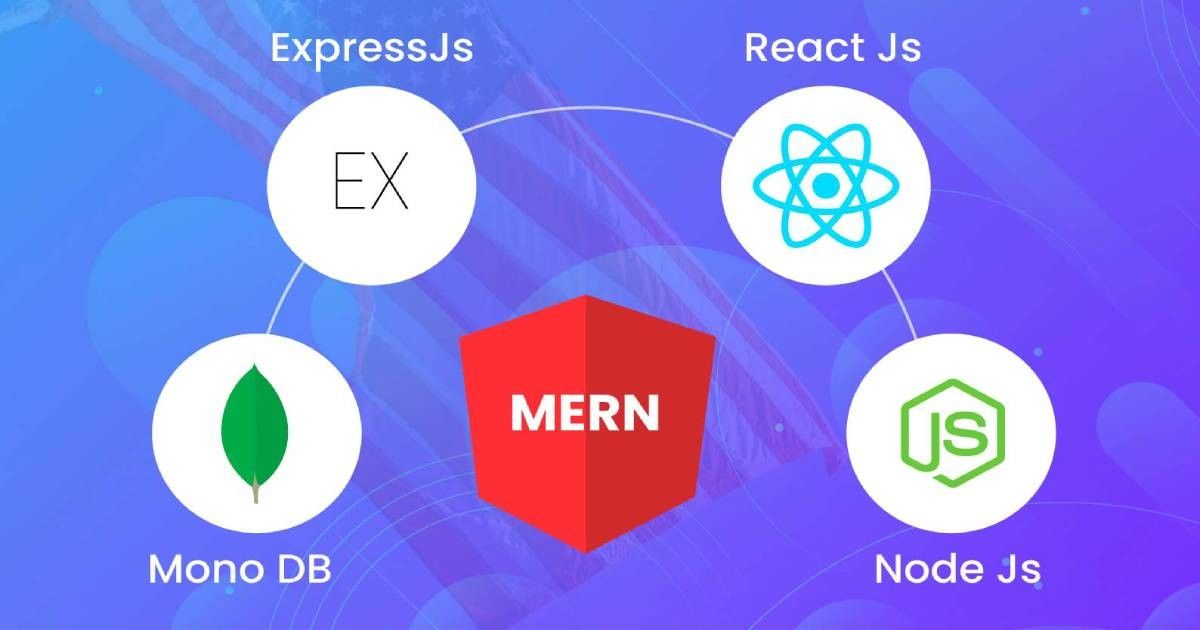
The MERN stack, which stands for MongoDB, Express.js, React, and Node.js, has evolved as a popular and powerful combination of technologies for web app development. MongoDB, a NoSQL database, provides flexibility and scalability by storing data in a JSON-like format. Express.js, a lightweight and flexible web application framework for Node.js, simplifies the development of server-side applications. React, developed by Facebook, is a JavaScript library for building user interfaces with a component-based architecture, enabling the creation of dynamic and interactive front-end experiences. Finally, Node.js is a server-side JavaScript runtime that executes code outside a browser, allowing developers to use JavaScript for both client and server-side development.
The MERN stack has gained prominence for its efficiency, real-time capabilities, and the ability to build modern, full-stack web applications seamlessly.
Pros of MERN Stack
- Full-Stack JavaScript Development: The MERN stack allows developers to use JavaScript across the entire application stack. This consistency simplifies the development process, as developers can seamlessly transition between the front end (React) and the back end (Node.js) using a single language.
- Reusability of Code: With React's component-based architecture, developers can create reusable UI components. This modularity enhances code reusability, reduces redundancy, and facilitates a more efficient development process.
- Real-Time Capabilities: MERN stack applications can easily implement real-time features through the use of technologies like WebSocket. This is particularly advantageous for applications requiring instant updates, such as chat applications or collaborative tools.
- Robust Community Support: Each component of the MERN stack (MongoDB, Express.js, React, Node.js) has a large and active community of developers. This means extensive documentation, a wealth of tutorials, and a plethora of third-party libraries and packages, contributing to the stack's reliability and support.
- Scalability: MongoDB, being a NoSQL database, is designed to scale horizontally, making it well-suited for applications experiencing growth. Additionally, Node.js's non-blocking, event-driven architecture enhances the stack's ability to handle a large number of concurrent connections.
Cons of MERN Stack
- Learning Curve: For developers unfamiliar with the MERN stack or JavaScript, there can be a steep learning curve. Mastering all the technologies and understanding their interactions may take some time.
- SEO Challenges: While React offers excellent performance for user interactions, it relies heavily on client-side rendering. This can pose challenges for search engine optimization (SEO), as search engines may struggle to index content rendered on the client side.
- Single Language Stack: Although considered a pro by some, the reliance on JavaScript throughout the stack can be a drawback for those who prefer using different languages for different components. This can limit the ability to leverage specialized skills in other languages.
- Complex Configuration: Setting up a MERN stack project may involve complex configurations, especially for beginners. Integrating different components and ensuring their seamless communication can be challenging without a good understanding of the technologies.
- Limited ACID Transactions in MongoDB: MongoDB, being a NoSQL database, sacrifices ACID (Atomicity, Consistency, Isolation, Durability) transactions for flexibility and scalability. In scenarios where strict transactional integrity is crucial, a relational database might be a better choice.
Top Companies Using MERN Stack
- Facebook: Facebook uses React.js extensively for its user interfaces.
- Netflix: Netflix employs the MERN stack for certain aspects of its platform.
- WhatsApp: WhatsApp, owned by Facebook, uses the React.js library for its web version.
- Instagram: Instagram, another Facebook-owned platform, utilizes the React.js library for its web interfaces.
- Airbnb: Airbnb uses React.js for building dynamic user interfaces on its website.
- Dropbox: Dropbox has incorporated React.js in its web applications for an enhanced user experience.
- Ebay: eBay has adopted Node.js for certain aspects of its platform.
- LinkedIn: LinkedIn uses Node.js for server-side applications and React.js for its web interfaces.
- Walmart: Walmart has utilized React.js for building user interfaces on its website.
- Mozilla: Mozilla, the organization behind Firefox, uses the MERN stack for certain web applications.
2) MEAN Stack
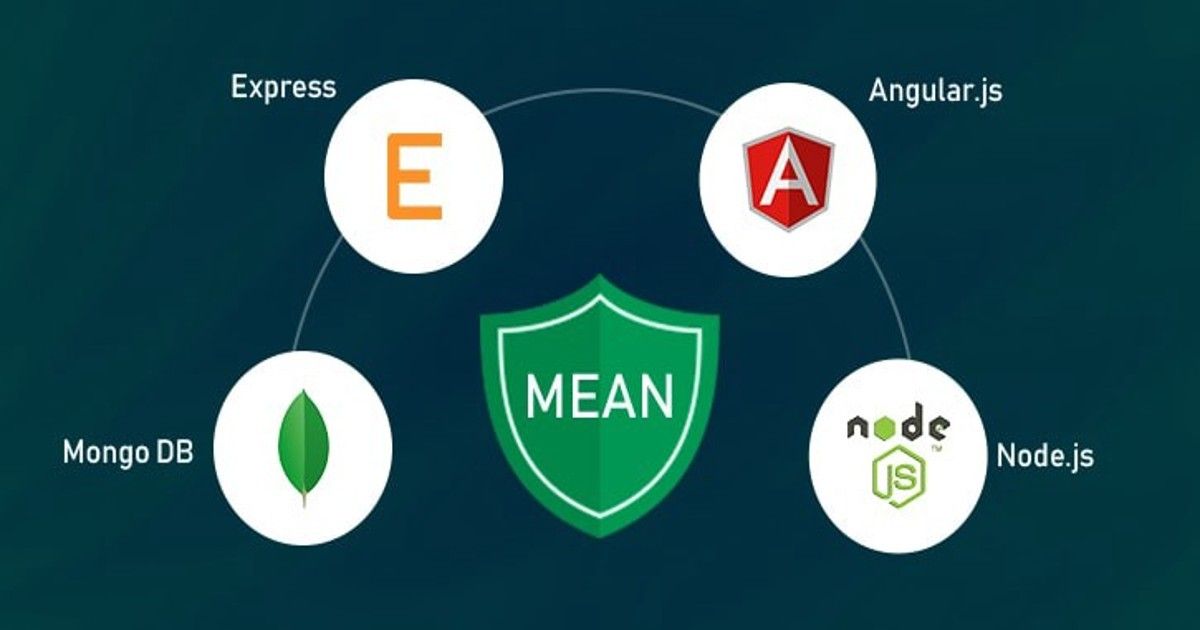
The MEAN stack, an acronym for MongoDB, Express.js, Angular, and Node.js, emerged as a powerful and popular technology stack for web application development. The stack's history can be traced back to the early 2010s when developers sought a cohesive solution for building dynamic and scalable web applications with JavaScript across the entire development stack. MongoDB, a NoSQL database, provided a flexible and scalable data storage solution. Express.js, a minimalist web application framework for Node.js, streamlined backend development. Angular, a front-end framework developed by Google, brought structure and efficiency to client-side application development. Node.js, a JavaScript runtime, enabled server-side execution, allowing developers to use a single language—JavaScript—throughout the entire stack. This unified and JavaScript-centric approach gained momentum, fostering collaboration among the open-source community.
Today, the MEAN stack continues to be a popular choice for developers building modern, real-time, and data-intensive applications.
Pros of MEAN Stack
- Uniform Language (JavaScript): MEAN stack utilizes JavaScript for both server-side and client-side development, providing a seamless and consistent coding experience throughout the entire application.
- Real-Time Application Development: With technologies like Socket.io, the MEAN stack facilitates the development of real-time applications, making it well-suited for chat applications, online gaming, and collaborative tools.
- JSON (JavaScript Object Notation): The use of JSON for data interchange between the client and server simplifies data handling and ensures a smooth transfer of information, contributing to faster development cycles.
- Scalability: MEAN stack applications can easily scale horizontally, enabling businesses to handle increased loads by adding more servers to the network.
- Active Community and Ecosystem: The MEAN stack has a vibrant and active developer community, which results in a wealth of tutorials, documentation, and third-party modules, fostering continuous improvement and innovation.
Cons of MEAN Stack
- Learning Curve: For developers unfamiliar with JavaScript, the MEAN stack's reliance on this language for both front-end and back-end development may present a steeper learning curve compared to other stacks.
- Maturity of Technologies: Some components of the MEAN stack, such as Angular, have experienced major updates and changes over time. This can lead to challenges in maintaining and updating existing projects.
- Full Stack Development Overhead: While full-stack development can be efficient, managing the entire application stack can sometimes lead to increased complexity, especially for smaller projects where a more focused technology stack might be more appropriate.
- SEO Challenges: Single-page applications (SPAs) built with MEAN stack technologies may face challenges with search engine optimization (SEO) due to the initial rendering being done on the client side.
- Limited Enterprise Adoption: In some enterprise environments, traditional stacks like LAMP (Linux, Apache, MySQL, PHP/Python/Perl) may still be more prevalent, which can affect the adoption of MEAN stack in certain business contexts.
Top Companies Using Mean Stack
- LinkedIn: LinkedIn, the professional networking platform, has been reported to use the MEAN stack for certain aspects of its application.
- Uber: Uber, the ride-sharing and transportation company, has used the MEAN stack for parts of its platform, particularly in the development of some internal tools.
- PayPal: PayPal, a widely used online payment system, has been known to leverage the MEAN stack for certain projects and applications.
- Netflix: While Netflix primarily uses a combination of technologies, it has employed Node.js, one of the components of the MEAN stack, for specific purposes within its infrastructure.
- Yahoo: Yahoo, the internet services provider, has been associated with using Node.js, a key component of the MEAN stack, for certain web applications.
- GoDaddy: GoDaddy, a domain registrar and web hosting company, has been reported to use the MEAN stack for developing some of its applications.
- The New York Times: The New York Times, a renowned media company, has utilized the MEAN stack for building interactive features on its digital platforms.
- Walmart: Walmart, the multinational retail corporation, has incorporated Node.js, a part of the MEAN stack, for certain e-commerce applications.
- DJI (Dà-Jiāng Innovations): DJI, a leading company in the drone industry, has reportedly used the MEAN stack for web application development.
- General Electric (GE): General Electric, a multinational conglomerate, has been associated with using Node.js, a component of the MEAN stack, for specific projects.
3) Django Web Stack
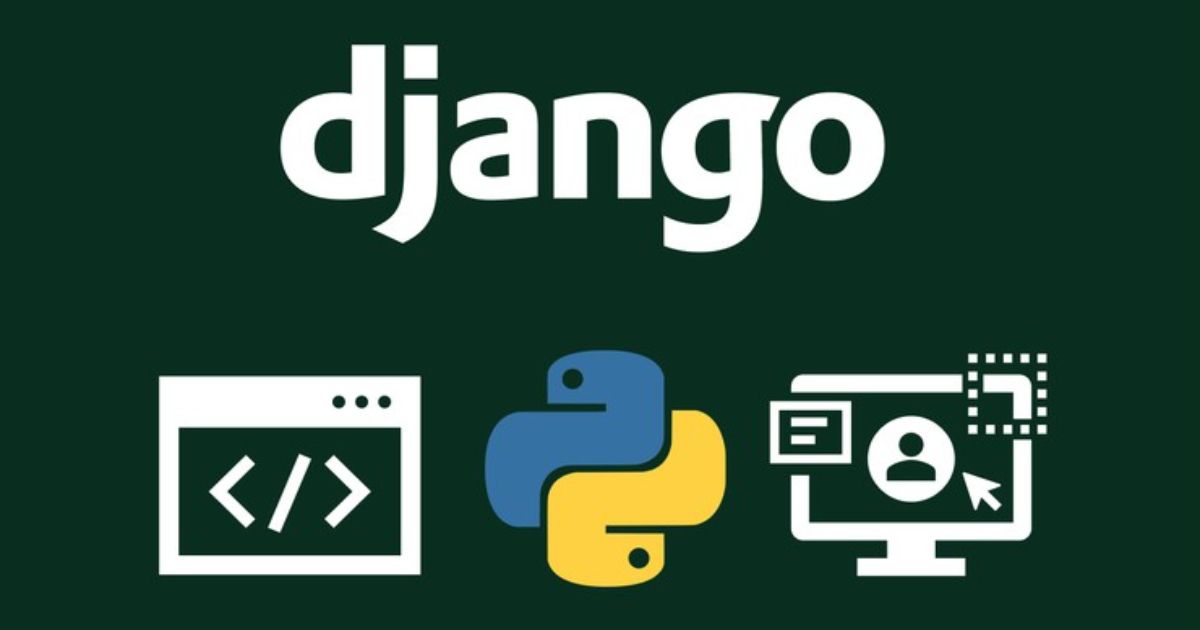
The Django stack, often referred to as the "Django web stack," revolves around the Django web framework and typically includes other components such as the PostgreSQL database, Nginx or Apache web servers, and Gunicorn or uWSGI application servers. At the core of this stack is Django, a high-level Python web framework that follows the Model-View-Controller (MVC) architectural pattern. It was created by Adrian Holovaty and Simon Willison and released in 2005 as an open-source project. Django emphasizes the "Don't Repeat Yourself" (DRY) principle and aims to simplify the development of complex, data-driven websites by providing a clean and pragmatic design.
Django's popularity has grown steadily due to its focus on rapid development, scalability, and maintainability. It incorporates an Object-Relational Mapping (ORM) system, enabling developers to interact with databases using Python code. As a full-stack framework, Django comes with built-in features for handling URL routing, templating, authentication, and more, streamlining the development process. The stack's components work cohesively to empower developers in creating robust and scalable web applications, and its flexibility allows for customization based on project requirements.
Pros of Django Web Stack
- Rapid Development: Django's high-level abstractions and built-in features facilitate faster development. Developers can focus on business logic rather than dealing with boilerplate code, resulting in quicker project delivery.
- Scalability: Django is designed to handle scalability challenges. Its MVT (Model-View-Template) architecture, combined with features like database sharding and caching, allows applications to scale seamlessly as user loads increase.
- Security: Django prioritizes security with built-in protection against common web vulnerabilities. Features like the ORM system prevent SQL injection, and the template system helps prevent Cross-Site Scripting (XSS) attacks, ensuring a robust security posture.
- Versatile ORM System: Django's Object-Relational Mapping (ORM) system simplifies database interactions. Developers can work with databases using Python code, making it easier to manage database-related tasks without writing complex SQL queries.
- Community and Documentation: Django has a large and active community that contributes to its continuous improvement. Extensive documentation and a wealth of third-party packages make it easier for developers to find solutions to problems and stay updated on best practices.
Cons of Django Web Stack
- Monolithic Nature: While the monolithic structure of Django simplifies development, it might become a drawback for extremely large projects. Decomposing a Django monolith into microservices can be challenging, impacting scalability and maintenance.
- Learning Curve: Django's extensive feature set and conventions may present a steep learning curve for beginners. Developers coming from different frameworks or programming languages might need time to adapt to Django's conventions.
- Less Flexibility in Front-End: Django is primarily a back-end framework, and while it integrates with front-end frameworks like React or Angular, it may not provide the same level of flexibility as specialized front-end frameworks.
- ORM Performance Overhead: While the ORM system simplifies database operations, it can introduce a performance overhead, especially in scenarios requiring complex queries. Tuning ORM queries may be necessary for optimal performance.
- Template System Limitations: Django's template system, while effective for rendering dynamic content, may be perceived as less powerful than some front-end frameworks. Developers seeking advanced front-end functionalities might find the template system limiting.
Top Companies Using Django Web Stack
- Instagram: Instagram, a popular photo and video sharing social platform, initially used Django in its early development.
- Pinterest: Pinterest, a visual discovery and bookmarking platform, has used Django for its backend services.
- Disqus: Disqus, a widely used blog comment hosting service, is known to be built using Django.
- Spotify: While not the entire platform, certain components of Spotify's backend have been developed with Django.
- Dropbox: Dropbox, a cloud-based file storage and collaboration platform, has utilized Django in parts of its infrastructure.
- YouTube (at Google): Certain components of YouTube, the video-sharing platform owned by Google, have been developed using Django.
- Eventbrite: Eventbrite, an online event management and ticketing platform, has used Django in its development.
- The Washington Post: The Washington Post, a prominent American newspaper, has employed Django for some of its web applications.
- NASA: Certain projects within NASA have used Django for web development purposes.
- Mozilla: Mozilla, the open-source community behind Firefox and other projects, has employed Django for various web applications.
4) Jamstack/Serverless
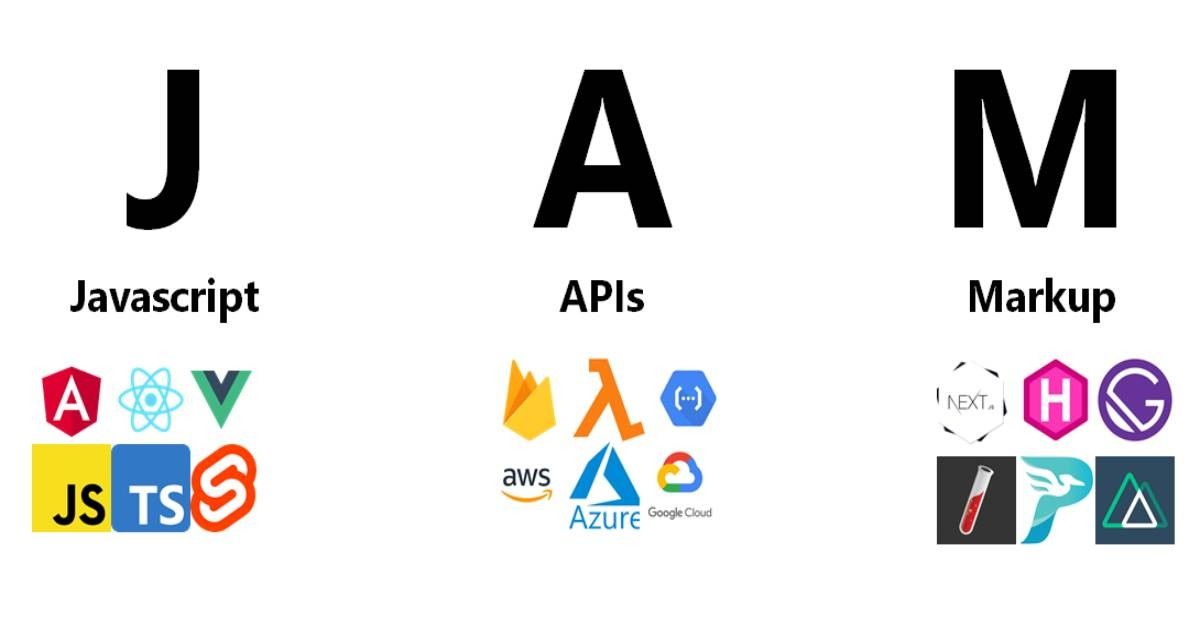
Jamstack, short for "JavaScript, APIs, and Markup," is a modern web development architecture that has gained popularity for its performance and flexibility. The concept emerged as a response to the limitations and challenges associated with traditional server-centric architectures. The term "Jamstack" was coined by Mathias Biilmann, the CEO of Netlify, around 2017. It represents a shift in how developers approach building websites by decoupling the frontend from the backend.
In the Jamstack architecture, the frontend is built using JavaScript, HTML, and CSS, while dynamic functionalities and data are handled by APIs. This separation allows for greater scalability, faster load times, and improved security. Content Delivery Networks (CDNs) play a crucial role in serving pre-built static assets globally, further enhancing performance. The Jamstack philosophy encourages the use of various services and APIs to handle different aspects of web development, promoting a modular and scalable approach. This architecture has gained widespread adoption, with numerous tools and platforms supporting Jamstack development, contributing to its evolution as a key paradigm in the modern web development landscape.
Pros of Jamstack
- Performance: Jamstack's static site generation and CDN-based content delivery result in faster loading times, providing an improved user experience.
- Scalability: With pre-built assets and APIs handling dynamic functionalities, Jamstack sites can easily scale to handle varying levels of traffic.
- Security: By minimizing server-side processes, the attack surface is reduced, making Jamstack inherently more secure. Static sites are less susceptible to common vulnerabilities.
- Developer Experience: Developers can leverage modern frameworks and tools for frontend development, making the workflow more efficient and enjoyable.
- Flexibility: Jamstack allows developers to choose the best tools for each part of their architecture, promoting a modular and flexible approach to building web applications.
Cons of Jamstack
- Limited Dynamic Functionality: While APIs can handle dynamic features, certain use cases may require server-side processing, making Jamstack less suitable for highly dynamic applications.
- Learning Curve: Transitioning to Jamstack may require developers to learn new tools and concepts, especially if they are accustomed to traditional server-based architectures.
- Build Times: Larger projects with extensive build processes might experience longer build times, affecting the speed at which changes are deployed.
- Backend Dependencies: For certain functionalities requiring server-side operations, developers may need to rely on third-party services or serverless functions, introducing additional dependencies.
- Client-Side Dependency: The reliance on client-side processing means users must have JavaScript enabled for optimal site functionality, potentially limiting accessibility for some users.
Top Companies Using Jamstack
- Netlify: A platform that facilitates the deployment and hosting of Jamstack sites.
- Vercel: Offers a platform for deploying and hosting Jamstack applications.
- Smashing Magazine: A popular web development resource site built with Jamstack principles.
- Stack Overflow: Utilizes Jamstack principles for certain sections of its website.
- BBC: Some sections of the BBC website are built using Jamstack architecture.
- Spotify: Incorporates Jamstack principles for aspects of its web presence.
- Coursera: Uses Jamstack architecture in certain parts of its web development.
- Intercom: Implements Jamstack principles for specific web projects.
- Alibaba Cloud: Incorporates Jamstack principles in certain web applications.
- Auth0: Utilizes Jamstack architecture for parts of its identity management platform.
5) FERN Tech Stack
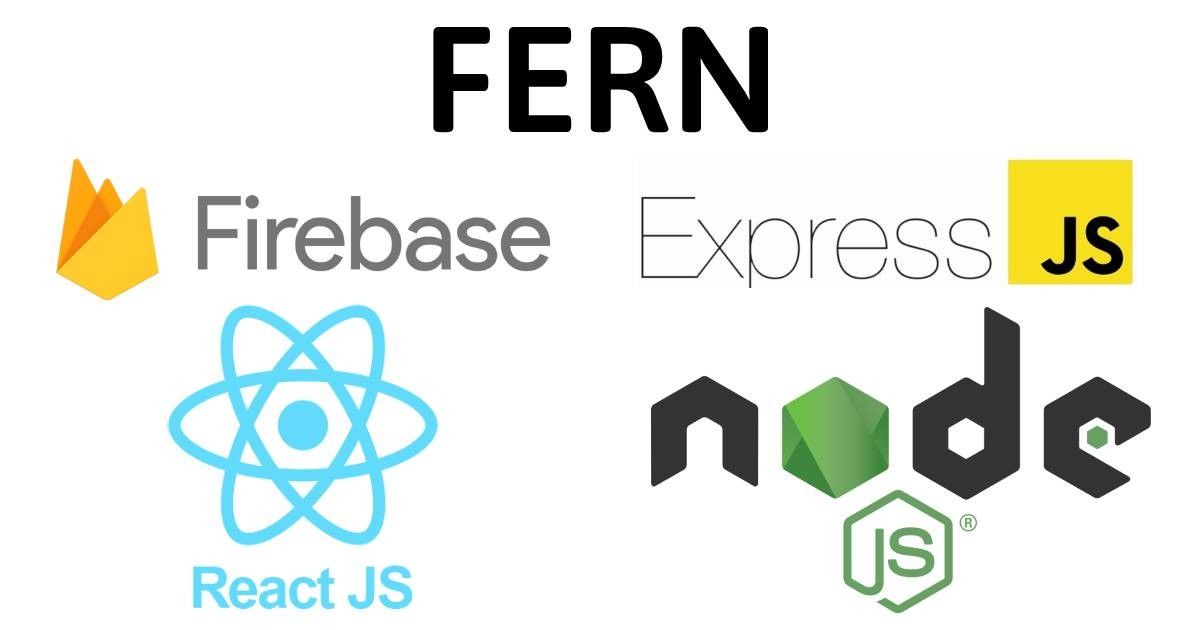
The FERN tech stack comprises four core technologies: FirebaseDB, Express.js, React.js, and Node.js. Notably, the key distinction between FERN and MERN lies in the choice of database.
While FERN relies on FirebaseDB, MERN opts for MongoDB. Both databases boast excellent functionality, making the decision largely dependent on individual preferences. Here are some succinct facts to consider when weighing the options.
MongoDB
MongoDB, a NoSQL database program, was first developed by the company 10gen (now known as MongoDB Inc.) and released in 2009. The history of MongoDB is rooted in the need for a more scalable and flexible database solution to address the challenges posed by traditional relational databases. Coined as a "document-oriented" database, MongoDB gained popularity for its ability to store data in a format similar to JSON, offering a dynamic and schema-less approach. This innovation allowed developers to work with data more intuitively, facilitating the storage of diverse and evolving data structures.
Over the years, MongoDB has become a cornerstone in the realm of modern database management, widely embraced for its scalability, flexibility, and seamless integration with modern development practices.
Pros of MongoDB
- Schema Flexibility: MongoDB is a NoSQL database, allowing for flexible schema design. This means you can change the structure of your database on the fly, accommodating evolving data requirements without the constraints of a rigid schema.
- Scalability: MongoDB's horizontal scalability is a significant advantage. It supports sharding, enabling the distribution of data across multiple servers, which can handle large amounts of traffic and data storage efficiently.
- Document-Oriented Model: With a document-oriented data model, MongoDB stores data in BSON (Binary JSON) format, which is a flexible and expressive way to represent complex hierarchical relationships. This makes it easier to work with data that evolves over time.
- Querying and Indexing: MongoDB supports rich query languages and allows for the creation of indexes on any field, facilitating fast and efficient retrieval of data. This is particularly beneficial for applications with complex data retrieval needs.
- Community and Support: MongoDB has a large and active community, providing extensive documentation, tutorials, and forums. The availability of professional support from MongoDB Inc. adds to the overall reliability of the platform.
Cons of MongoDB
- Data Size and Storage Overhead: MongoDB's flexibility comes at a cost. BSON's structure can result in larger file sizes compared to traditional databases, leading to increased storage requirements.
- Memory Usage: MongoDB's performance relies heavily on available memory. Large datasets may require substantial RAM, and if the data exceeds available memory, performance can be impacted.
- Lack of Joins: MongoDB does not support joins, a feature common in relational databases. While this is intentional to maintain simplicity, it can complicate certain data retrieval scenarios.
- Not ACID-Compliant by Default: MongoDB sacrifices some ACID properties (Atomicity, Consistency, Isolation, Durability) by default to achieve scalability and flexibility. However, it provides options to enforce these properties when necessary.
- Learning Curve: For users familiar with relational databases, adapting to the NoSQL mindset and MongoDB's specific features may pose a learning curve. Additionally, understanding the intricacies of schema design is crucial for optimal use.
Top Companies Using MongoDB
- Uber: Uber uses MongoDB to manage large volumes of data generated by its ride-hailing platform, including user profiles, ride details, and driver information.
- Facebook: MongoDB has been utilized by Facebook for specific applications, benefiting from its flexible schema and scalability for certain data storage needs.
- Cerner Corporation: Cerner, a healthcare technology company, has employed MongoDB to handle healthcare data and improve the efficiency of its systems.
- Adobe: MongoDB is part of Adobe's technology stack, providing a scalable and flexible solution for managing diverse types of data.
- NASA: MongoDB has found applications at NASA for handling large datasets related to space exploration and research.
- eBay: eBay has integrated MongoDB into its technology infrastructure to manage product catalogs, user data, and improve the performance of its applications.
- The New York Times: MongoDB is utilized by The New York Times to store and manage content, providing a flexible and scalable solution for their digital platforms.
- Cisco Systems: Cisco, a global technology company, has implemented MongoDB to handle diverse data types efficiently within its networking and communication solutions.
- Square Enix: MongoDB is known to be part of the technology stack used by Square Enix, a major player in the gaming industry.
- Shutterfly: Shutterfly, an online photo printing and personalized products company, has employed MongoDB for its flexibility and scalability in managing user data and preferences.
FirebaseDB
Firebase Realtime Database, often referred to as FirebaseDB, is a cloud-hosted NoSQL database developed by Firebase, a subsidiary of Google. Launched in 2011, Firebase initially focused on providing a real-time synchronization platform for developers to build collaborative and reactive applications. The Realtime Database was one of the first services offered by Firebase, aiming to simplify the process of creating apps that could instantly reflect changes made by users. Based on a JSON data model, FirebaseDB allowed developers to store and sync data in real-time across multiple clients, enabling seamless collaboration and responsive user experiences.
Over the years, Firebase has evolved into a comprehensive mobile and web application development platform, offering additional services such as authentication, hosting, cloud functions, and more, making it a popular choice for developers seeking a unified and scalable solution for building modern applications.
Pros of FirebaseDB
- Real-time Synchronization: FirebaseDB excels in providing real-time synchronization of data across multiple clients. This instantaneous updating of information ensures that users experience the latest changes without manual refreshing.
- Serverless Architecture: FirebaseDB is a serverless solution, eliminating the need for developers to manage servers. This results in simplified development processes, reduced infrastructure overhead, and faster deployment.
- Scalability: As a cloud-based database, FirebaseDB scales automatically to handle varying workloads. This scalability is particularly advantageous for applications that experience fluctuating user loads.
- Cross-platform Compatibility: Firebase supports cross-platform development, making it suitable for web, iOS, and Android applications. Developers can leverage a single backend solution for different platforms, streamlining the development process.
- Easy Integration with Firebase Services: FirebaseDB seamlessly integrates with other Firebase services, such as Firebase Authentication, Cloud Functions, and Hosting. This integrated ecosystem simplifies the development workflow and enhances the overall functionality of applications.
Cons of FirebaseDB
- Limited Query Capabilities: FirebaseDB has more limited querying and filtering capabilities compared to some traditional databases. Complex queries may require additional client-side processing.
- No Support for Complex Transactions: FirebaseDB doesn't support complex transaction operations that involve multiple steps. This limitation can be a challenge for applications requiring intricate transactional logic.
- Data Structuring Challenges: Designing the database structure for optimal performance can be challenging, especially for applications with evolving data models. Inadequate planning may lead to restructuring efforts later.
- Pricing Complexity: Firebase pricing can become complex, especially as an application scales. Developers need to carefully consider usage patterns and plan accordingly to manage costs effectively.
- Offline Data Access Limitations: While Firebase provides offline data access, it may not cover all scenarios. Certain features, such as complex queries or data synchronization, might be limited in offline mode.
Top Companies Using FirebaseDB
- Lyft: The popular ride-sharing service has used FirebaseDB for real-time features in their app.
- Shazam: The music identification app has incorporated FirebaseDB for backend services.
- Instacart: An American company that operates as a same-day grocery delivery and pick-up service used FirebaseDB for real-time features and backend services.
- The New York Times: The news organization has utilized FirebaseDB for some of its mobile app features.
- Trivago: The hotel and accommodation search platform uses FirebaseDB for its mobile app development.
- Duolingo: The language learning platform employs FirebaseDB for real-time features and backend services.
- Twitch: The live streaming platform has integrated FirebaseDB for certain functionalities in its app.
- Venmo: The mobile payment service has used FirebaseDB for real-time updates and notifications.
- Bitmoji: The personalized emoji app owned by Snap Inc. has incorporated FirebaseDB for its services.
- Alibaba Group: Alibaba, a Chinese multinational conglomerate, uses FirebaseDB for various applications.
Final Thoughts
Choosing the right tech stack depends on various factors, including project requirements, development team expertise, scalability needs, and long-term maintenance considerations. Each tech stack mentioned here has its strengths and is favored for different types of web applications.
As technology continues to advance, staying informed about the latest developments in web app development can aid in making informed decisions for your projects.





